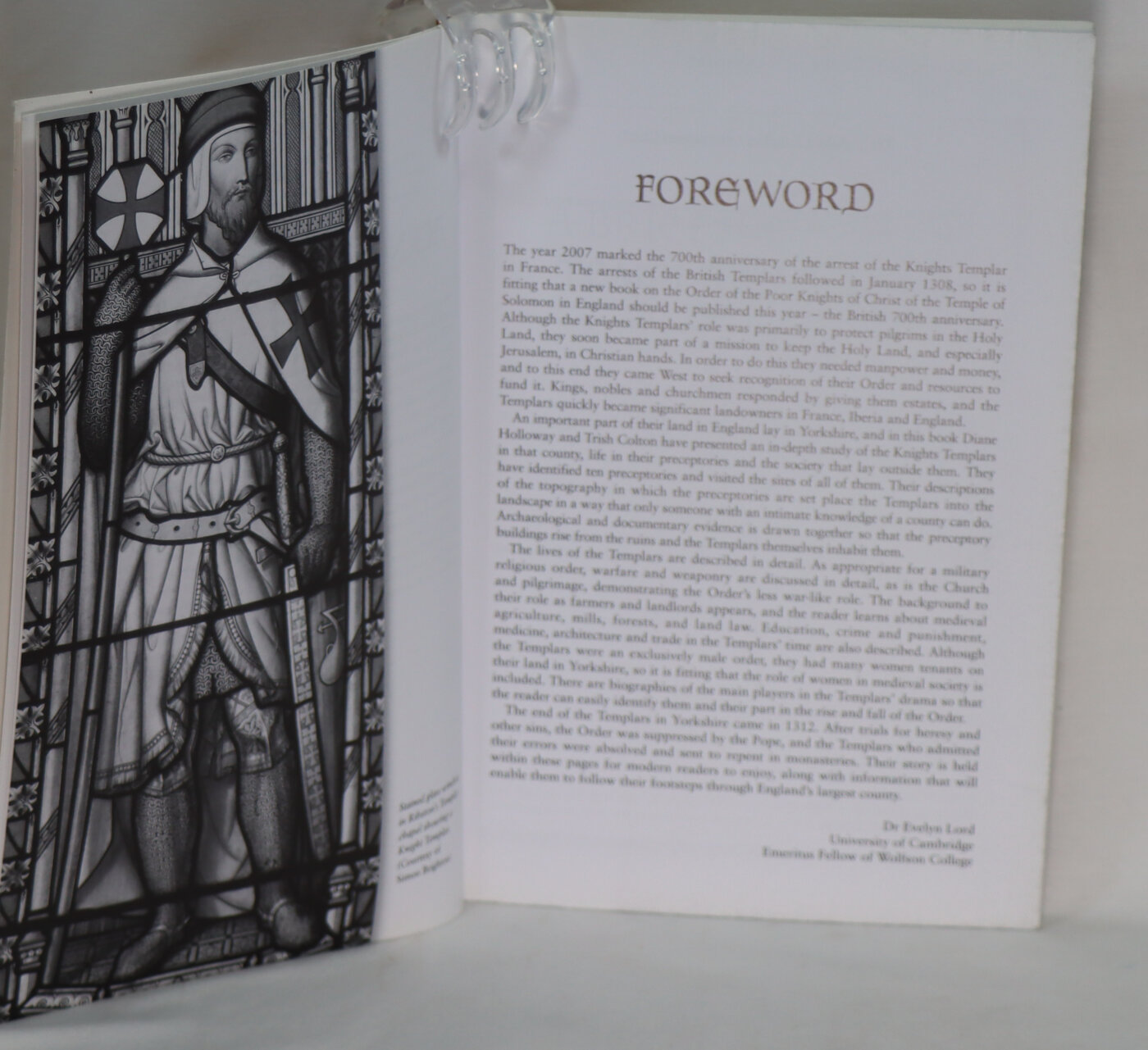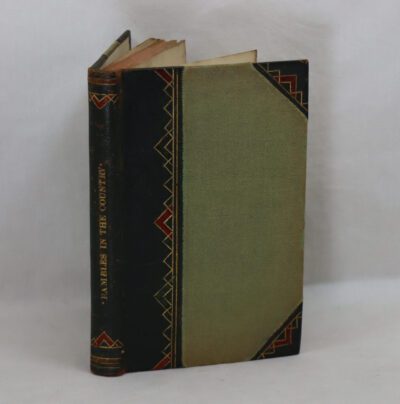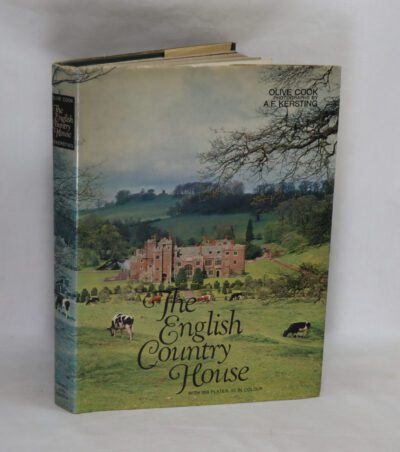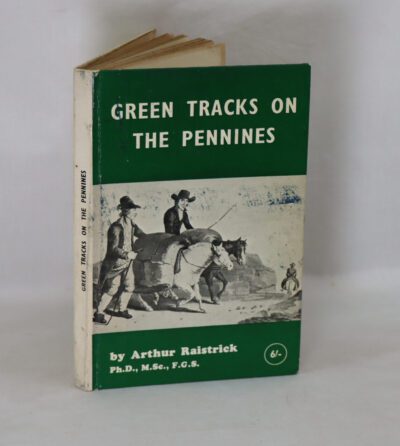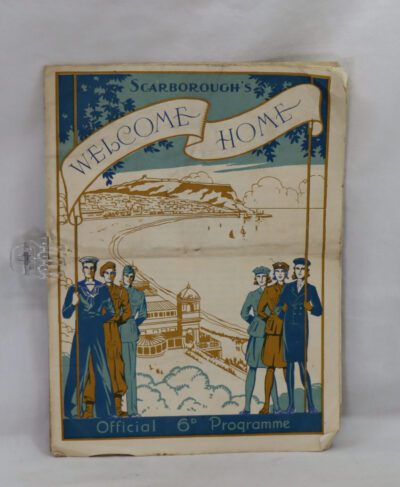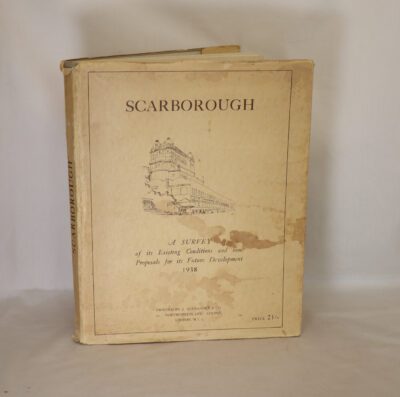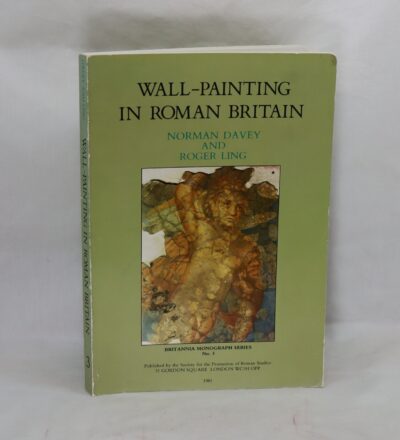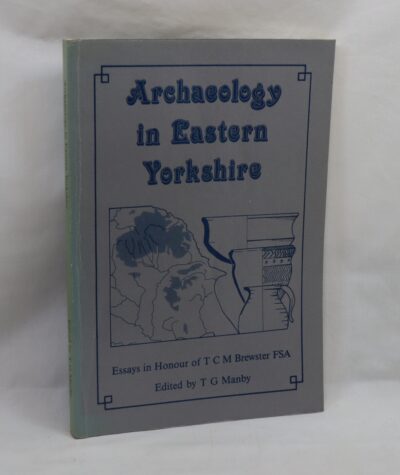The Knights Templar in Yorkshire.
By Diane Holloway & Trish Colton
ISBN: 9780752473604
Printed: 2008
Publisher: The History Press. Stroud
| Dimensions | 17 × 25 × 1 cm |
|---|---|
| Language |
Language: English
Size (cminches): 17 x 25 x 1
Condition: Fine (See explanation of ratings)
Your items
Item information
Description
Paperback. Tan board binding with white title and Knight image.
- We provide an in-depth photographic presentation of this item to stimulate your feeling and touch. More traditional book descriptions are immediately available.
- Note: These books carry the £5.00 discount to those that subscribe to the F.B.A. mailing list.
Where can you see an effigy of a Templar? What prompted King John to hand England over to an Italian? Who worked for the Templars in Yorkshire? The Knights Templar in Yorkshire answers all these questions and many more. This new book explores what medieval life was like during the Templars’ stay in Yorkshire. Not only was it the biggest county in Britain, but in Templar terms it was also the richest. They owned more land, property and people in Yorkshire than in any other county in England. This fascinating volume takes the reader on an intimate tour of the ten major Templar sites established in Yorkshire, and reveals what life was like for their inhabitants – how the land was farmed, what the population ate, how they were taxed and local legends. Illustrated with an intriguing collection of photographs and specially commissioned maps, this book is sure to appeal to anyone interested in medieval history.
The Poor Fellow-Soldiers of Christ and of the Temple of Solomon, mainly known as the Knights Templar, was a French military order of the Catholic faith, and one of the wealthiest and most popular military orders in Western Christianity. They were founded c. 1119 to defend pilgrims on their way to Jerusalem, with their headquarters located there on the Temple Mount, and existed for nearly two centuries during the Middle Ages.
Officially endorsed by the Roman Catholic Church by such decrees as the papal bull Omne datum optimum of Pope Innocent II, the Templars became a favoured charity throughout Christendom and grew rapidly in membership and power. The Templar knights, in their distinctive white mantles with a red cross, were among the most skilled fighting units of the Crusades. They were prominent in Christian finance; non-combatant members of the order, who made up as much as 90% of their members, managed a large economic infrastructure throughout Christendom. They developed innovative financial techniques that were an early form of banking, building a network of nearly 1,000 commanderies and fortifications across Europe and the Holy Land.
The Templars were closely tied to the Crusades. As they became unable to secure their holdings in the Holy Land, support for the order faded. Rumours about the Templars’ secret initiation ceremony created distrust, and King Philip IV of France, while being deeply in debt to the order, used this distrust to take advantage of the situation. In 1307, he pressured Pope Clement V to have many of the order’s members in France arrested, tortured into giving false confessions, and then burned at the stake. Under further pressure, Pope Clement V disbanded the order in 1312. The abrupt disappearance of a major part of the medieval European infrastructure gave rise to speculation and legends, which have currently kept the “Templar” name alive.
Want to know more about this item?

Related products
Share this Page with a friend


